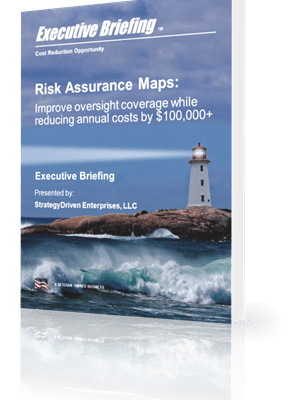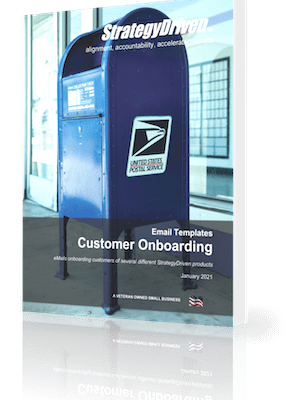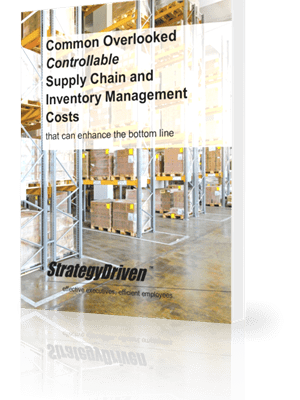Breaking Into Senior Care: A Strategic Guide to Opening an RCFE

California’s aging population continues to grow, and with it comes a rising demand for high-quality senior living options. Residential care facilities for the elderly (RCFEs) are one of the most vital responses to this demographic shift. They provide non-medical, residential care for seniors who need help with daily living but still want independence and dignity.
For aspiring entrepreneurs and caregivers alike, opening an RCFE can be a life-changing opportunity. It allows you to blend compassion with business strategy while meeting a pressing societal need. But breaking into this sector requires careful planning, regulatory compliance, and a willingness to learn the nuances of operating a successful care facility.
Getting Started: The Blueprint for Success
The first steps in opening an RCFE can feel overwhelming. But with the right guidance, you can move forward with clarity. If you’re beginning your journey, resources like how to start an assisted living facility provide a detailed roadmap of the process.
The Early Foundations
1. Administrator Certification
You must become or hire a certified RCFE administrator. This involves completing an 80-hour training program and passing the state exam.
2. Securing Facility Control
Before applying for a license, you must have legal control over a property through ownership, a lease, or purchase agreement.
3. Orientation With DSS
The Department of Social Services requires all prospective licensees to attend a mandatory orientation session to understand regulatory obligations.
4. Fire Marshal Pre-Inspection
Facilities must pass safety and fire code inspections. Addressing compliance early prevents costly delays later.
These foundational steps ensure you’re starting with both a regulatory and operational baseline.
Step-by-Step: The RCFE Launch Process
Once the foundation is in place, you’ll move through a structured series of steps toward licensing approval.
Application Submission
- Prepare detailed operational plans, financial statements, and facility layouts.
- Include staff policies, emergency procedures, and resident care protocols.
- Ensure all forms are complete because errors or omissions can cause months of delays.
Component II Interview
A licensing program analyst (LPA) will review your application and interview you about your preparedness to operate the facility. This is your chance to demonstrate not only knowledge but also your commitment to high standards of care.
Component III Inspection
This is the pre-licensing physical inspection of your facility. The LPA will review safety systems, resident accommodations, staff records, and compliance readiness. Passing this stage is essential for final approval.
License Issuance and First Admissions
Once approved, your license is issued, and you can begin admitting residents. This milestone marks the transition from preparation to operation, where your planning becomes a living, breathing care community.
Understanding RCFE Care in California
RCFEs are designed for seniors aged 60 and over who require assistance with daily activities but do not need medical care. Services typically include:
- Personal care (bathing, grooming, dressing)
- Meal preparation and nutrition management
- Medication supervision
- Social and recreational activities
- Transportation and mobility support
This model of care fills a critical gap: offering seniors independence with safety, while easing the burden on families.
Strategic Considerations for Success
Beyond licensing, opening an RCFE is about creating a sustainable, resident-centered environment. Key strategic considerations include:
- Location & Demand: Analyze local demographics and competition. Facilities thrive in communities with high senior populations and unmet care needs.
- Legal & Business Structure: Decide whether to operate as an LLC, corporation, or sole proprietorship for liability and tax purposes.
- Financial Planning: Develop a budget that accounts for property costs, staffing, licensing fees, furnishings, and at least three months of reserve funds.
- Staffing Model: Build a team aligned with your mission. Prioritize empathy, training, and retention.
- Emergency Preparedness: Develop fire, earthquake, and disaster plans to ensure safety and compliance.
Overcoming Common Challenges
Opening an RCFE is rewarding but comes with hurdles. Anticipating them is key.
- Documentation Overload: The application process is paperwork-intensive. Use checklists and consultants to stay organized.
- Zoning and Local Regulations: Not all residential areas permit RCFEs. Engage with local authorities early.
- Staff Recruitment: Turnover in care industries is high. Offer training, fair pay, and supportive environments to retain staff.
- Financial Strain: Start-up costs can be significant. Plan carefully for cash flow during the licensing phase and early months of operation.
Marketing Your RCFE: Building Trust and Visibility
Attracting residents requires a strong reputation and thoughtful marketing strategies.
1. Online Presence
- Create a professional website with photos, testimonials, and details of services.
- Use social media platforms to share updates, resident activities, and care philosophies.
2. Community Networking
- Build relationships with hospitals, senior centers, and physicians who may refer families.
- Participate in local senior events and caregiver workshops.
3. Transparency
- Families value honesty. Offer open houses, tours, and information sessions.
- Highlight your compliance, safety measures, and resident-centered programs.
4. Word-of-Mouth
- Satisfied families are your best advocates. Encourage referrals through exceptional service and communication.
Marketing in senior care is about trust. Families want reassurance that your facility is safe, compassionate, and capable.
Financial Projections and Realities
Opening an RCFE is both a calling and a business decision. While compassion drives the mission, financial planning ensures sustainability. With careful preparation, an RCFE can deliver consistent income while fulfilling an essential community need.
Start-Up Costs: A Breakdown
The initial investment depends on the size of the facility, location, and whether you’re purchasing an existing property or converting one. Typical categories include:
1. Property Acquisition or Lease
- Leasing a residential property suitable for 6–15 residents may cost $3,000–$8,000 per month, depending on the region.
- Purchasing property can range from $500,000 to $2 million+, particularly in urban or coastal California.
2. Renovations and Compliance Upgrades
- Fire sprinklers, alarms, and accessibility modifications (ramps, bathrooms, widened doorways).
- Costs vary but often run between $20,000–$100,000 depending on the property condition.
3. Licensing and Application Fees
- DSS application fees are modest (a few thousand dollars), but the hidden costs come from consultants, legal assistance, and professional advisors who help ensure compliance.
4. Furniture, Fixtures, and Equipment (FF&E)
- Beds, dressers, dining furniture, kitchen upgrades, common area décor, and outdoor safety.
- Expect $1,500–$3,000 per resident space, plus shared spaces, averaging $30,000–$80,000 for small facilities.
5. Initial Staffing and Training
- Hiring certified caregivers, administrators, and kitchen or housekeeping staff.
- Payroll during the licensing phase (before residents move in) may add $20,000–$50,000 in reserves.
6. Marketing and Outreach
- Professional website, brochures, signage, and advertising.
- $5,000–$15,000 depending on the scale of your launch campaign.
Estimated Totals:
- Small RCFEs (6–15 residents): $150,000–$250,000.
- Medium RCFEs (16–49 residents): $500,000–$750,000.
- Large RCFEs (50+ residents): $1 million and up.
Ongoing Costs
Once operational, monthly expenses will be your largest financial consideration. These recurring costs determine your cash flow stability.
1. Staff Salaries and Benefits
- The single largest expense, often 40–60% of operating costs.
- For small homes: $20,000–$40,000 per month depending on shifts and staff ratios.
- For large facilities: $100,000+ per month for multi-disciplinary teams.
2. Utilities and Maintenance
- Electricity, water, gas, internet, and ongoing facility upkeep.
- Small facilities: $2,000–$5,000/month.
- Larger communities: $15,000+/month.
3. Food and Resident Supplies
- Nutritious meals, linens, cleaning supplies, and toiletries.
- Average $300–$500 per resident per month.
4. Insurance Premiums
- Liability, property, and worker’s compensation insurance.
- Costs vary but typically range from $10,000–$50,000 annually depending on coverage and facility size.
5. Continuing Education and Training
- Administrators must complete CEUs, and staff need regular training in first aid, dementia care, and compliance.
- Budget $1,000–$5,000 per year for ongoing education.
Revenue Potential
Revenue depends on occupancy rates and monthly resident fees, which vary widely based on services, amenities, and region.
Small RCFE (6–15 residents)
- Monthly fees per resident: $3,500–$7,000.
- Potential revenue: $20,000–$70,000 per month at full occupancy.
- Profit margin: modest but steady, best suited for those wanting a family-like atmosphere.
Medium RCFE (16–49 residents)
- Monthly fees per resident: $3,000–$6,500.
- Potential revenue: $50,000–$300,000 per month at full occupancy.
- Profit margin: higher scalability but requires larger staff and administrative structure.
Large RCFE (50+ residents)
- Monthly fees per resident: $3,000–$6,000.
- Potential revenue: $150,000–$600,000+ per month at full occupancy.
- Profit margin: strongest, but capital intensive and management-heavy.
The Occupancy Factor
Occupancy is the lifeblood of RCFE profitability. Even with high monthly fees, a 50% occupancy rate may leave the facility in deficit. Successful operators:
- Launch with strong marketing campaigns.
- Maintain high-quality care to generate word-of-mouth referrals.
- Build referral networks with hospitals, doctors, and senior agencies.
Profitability Timeline
- Year 1–2: Often break-even as occupancy builds and start-up costs are recouped.
- Year 3–5: Facilities typically reach consistent profitability if occupancy stabilizes above 80%.
- Year 5+: Mature facilities with strong reputations can enjoy reliable profit margins of 15–30%, depending on scale.
FAQs About Opening an RCFE
1. How long does it take to open an RCFE?
The process typically takes 6–12 months, depending on preparation, property readiness, and responsiveness during application reviews.
2. Can I open an RCFE in my own home?
Yes, many small facilities begin in residential homes, provided they meet zoning and compliance requirements.
3. How many staff do I need?
Staffing ratios depend on the size of your facility and resident needs, but at minimum, one staff member must be available at all times.
4. What are the most common reasons applications are denied?
Incomplete paperwork, insufficient funds, and property non-compliance are leading causes of denial.
5. Do I need medical staff?
No. RCFEs are social models, not medical facilities. Staff provide personal care, but medical professionals are not required on-site.
6. What’s the career outlook?
With California’s senior population projected to rise significantly, demand for RCFEs will continue to expand, creating stability and growth opportunities for licensed administrators.
Final Thoughts
Breaking into senior care through opening an RCFE is both a business venture and a social mission. The path requires diligence, regulatory compliance, financial investment, and strategic marketing. But the rewards, providing safe, dignified homes for seniors while building a meaningful career, are immense.
Whether you dream of running a small, home-style residence or a larger community, success lies in preparation and passion. Start with a clear plan, surround yourself with a supportive team, and approach the journey with both heart and strategy.
By following each step carefully, you’ll not only earn a license; you’ll create a home where seniors can thrive.












Leave a Reply
Want to join the discussion?Feel free to contribute!